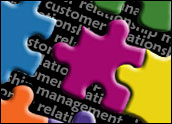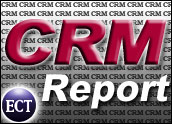
If you are in London on April 24th, you might want to check out the next monthly VRM Hub meeting. What is VRM, you wonder?
For starters, VRM, or vendor relationship management, is the brainchild of Doc Searls, senior editor of Linux Journal and co-author of The Cluetrain Manifesto. Project VRM is a community-driven effort headed by Searls and headquartered at Harvard University’s Berkman Center for Internet and Society. Its goal is to build an open source framework of standards and protocols for a category of tools that will let individuals and organizations interact on more equivalent terms.
For an explanation ofwhat that means in everyday terms, a good place to start is with Adriana Lukas, founder of the Big Blog Company and an enthusiastic advocate of the concept.
“VRM is about consumers taking control of the transaction and thus the relationship with the vendor,” Lukas told CRM Buyer. “It is a form of empowerment for the consumer, because it allows us to make available the information we want vendors to have.”
This is not an us-versus-them movement, she hastens to add. Rather, it is a deliberate approach by consumers that will be equally beneficial to vendors.
Reaching Out
That can be a difficult concept to grasp — especially when thinking in terms of business relationships or new killer Web 2.0 applications such Facebook or MySpace — admits Keith Hopper, who’s on the Project VRM Steering Committee.
Applications facilitating electronic personal health records may come closest to this concept of any software category on the market today, Hopper told CRM Buyer. These can loosely be described as products that let patients use a single, unified electronic record when interacting with physicians and pharmacies.
There are perhaps a dozen or more PHRs on the market, including Microsoft’s HealthVault and, more recently, Google’s cooperative endeavor with the Cleveland Clinic.
A personal RFP, or request for proposal, is another example of a killer VRM app, Hopper said, describing that potential product as a vehicle for consumers to reach out to VRM-compliant vendors when looking to buy a certain product or service.
The VRM meetings are apparently catching on in various communities both in the U.S. and Europe, if only for the networking opportunities. This is what London-based Rich Marr, author of Richard Marr’s Tech Blog, wrote about the last meeting:
“I went to the VRM London meeting yesterday kindly hosted by Sun [Google and Sun Microsystems have been hosting the meetings in their respective offices]. I have to admit I was somewhat undecided before I turned up, but there are clearly a lot of passionate and imaginative people driving it, and within an hour I already had a few pages of implementation ideas and compelling applications that could be based on it.”
Tracking Your Customers Online
Meet Eric Kingsley, a very active member of AFOL, or adult fans of Legos (yes, the toy). He not only posts frequently on social networks, but also maintains three Web sites — two of which are dedicated exclusively to Lego. Joe Comeau, another AFOL member, buys US$4,000 of Lego a year. Finally, there is Linda Dallas, who is an avid reader of the AFOL forums but rarely makes contributions of her own.
Josh Bernoff, a Forrester analyst, writes about these three people is his post,“Are Your Customers Ready For Social Applications?”
Lego sells most of its products to kids. Still, the fiercely loyal adult users are very much worth tracking and analyzing, Bernoff says. He met the aforementioned AFOLers at a model train show, “and as I interviewed them, I could see in microcosm how their participation reflects the varied elements that make up social media.”
If you want to know what your customers are doing, you have a few options, he writes. “You could survey them, or you could make reasonable estimates based on their demographics … But building social applications for your customers without knowing their profile is like mounting an expedition in [a] strange country without a map — you may not end up where you were planning.”
Companies That Get It Right
After last week’s focus on customer complaint blogs, it’s only fair to revisit one of the few blogs — independent of a corporate mission, that is — devoted to what companies are doing right.
Becky Carroll at Customers Rock! tells of a Wells Fargo’s initiative in her post.
“Something caught my eye behind the friendly teller, Jennifer. Another employee was preparing a chart to go on the wall entitled, “11 Ways to WOW the Customer,” she wrote.
“Jennifer told me it was to help remind the team about customer service, with the main goal being that customers feel welcome each time they come into the bank. They want the experience to be such a good one that customers will seek them out for their future banking activities, even if this is not their home branch.
“Jennifer said this customer focus makes the branch experience not only better for customers, but also better for her and the other employees that work there. She enjoys her job more when she is able to truly help customers with their needs.”















































One good way to implement VRM (if I got the concept right)is to set up dedicated extranets for customers. A personal space where vendors can communicate with individual customers or which can act as customer communities. Many web based applications out there let you set up such spaces in minutes, with tools like forums, file collaboration etc which facilitate communication/community. This approach has worked well with our clients.
that’s what we do. we use a tool called hyperoffice [hyperoffice.com], which is an intranet application, but it also lets us easily set up custom workspaces for clients. many of them are impressed.